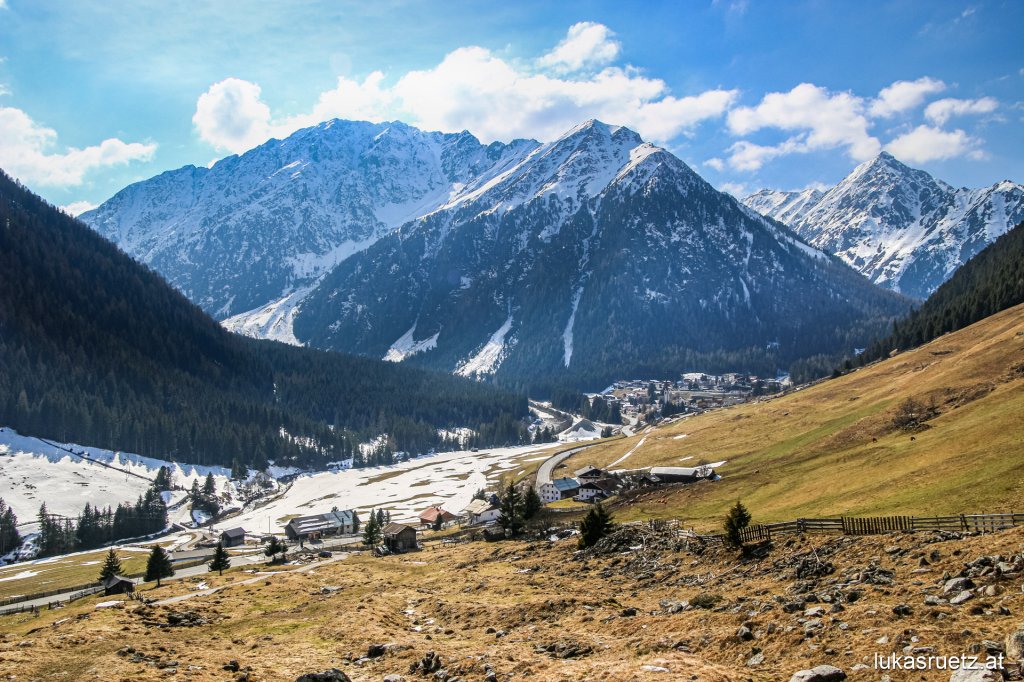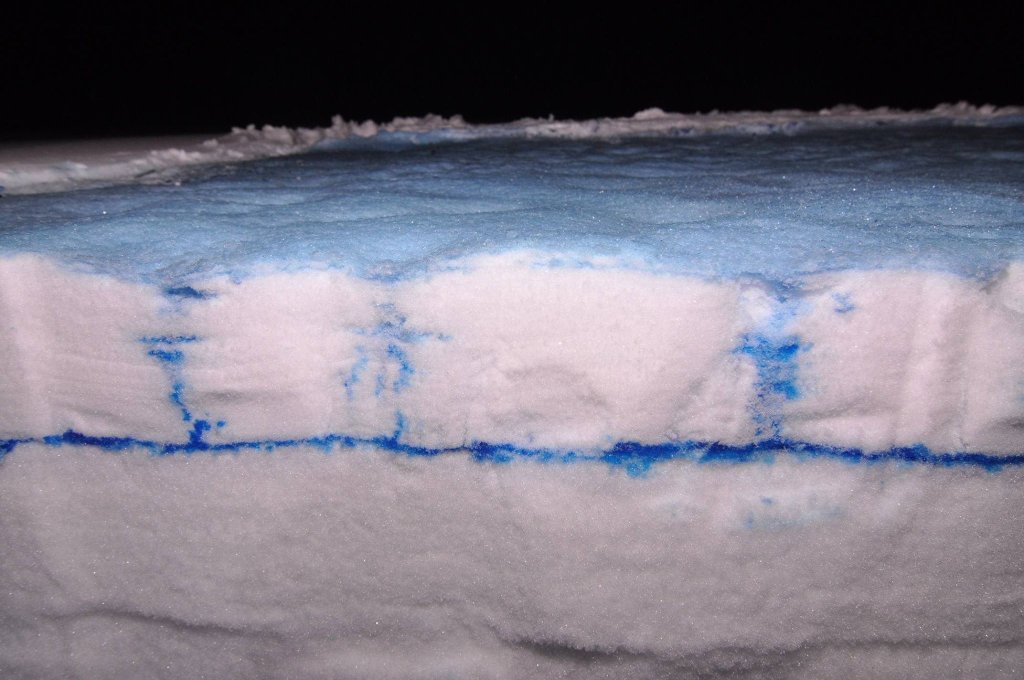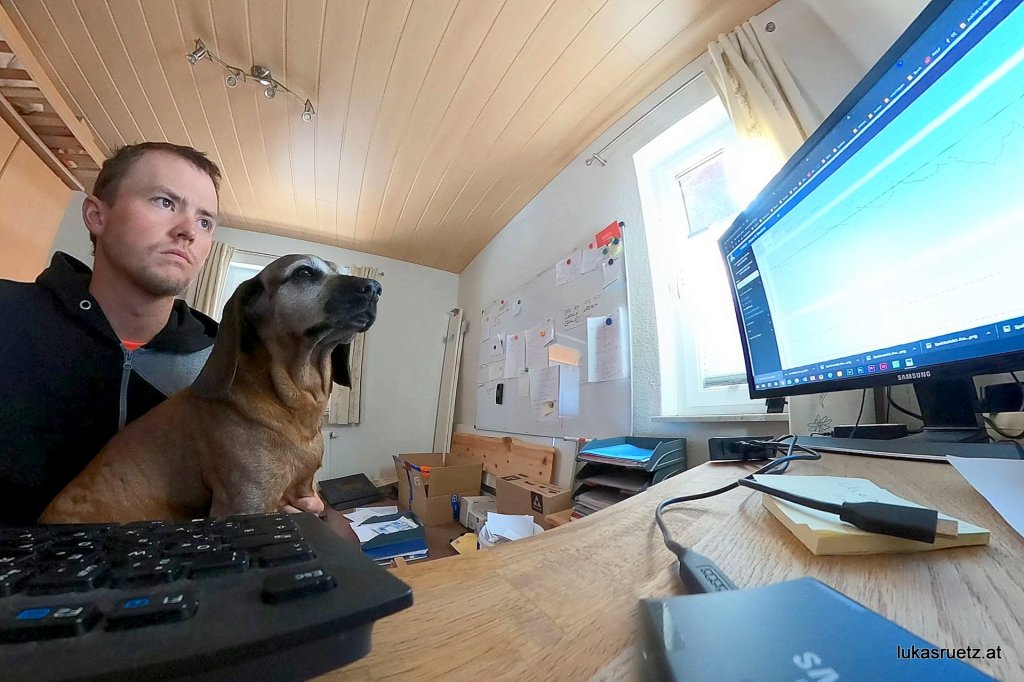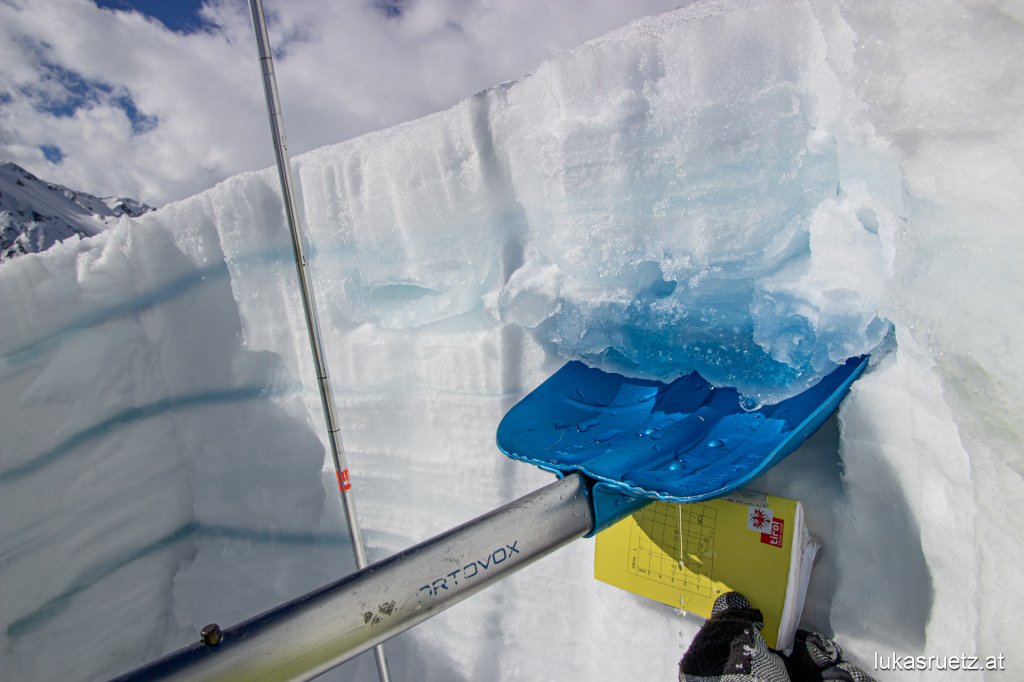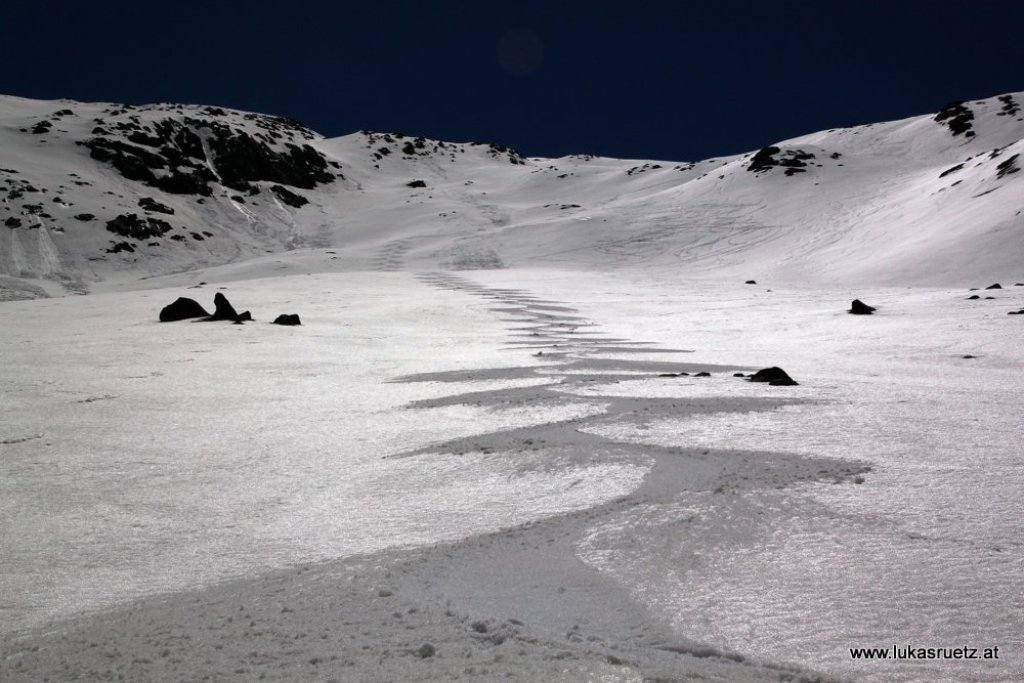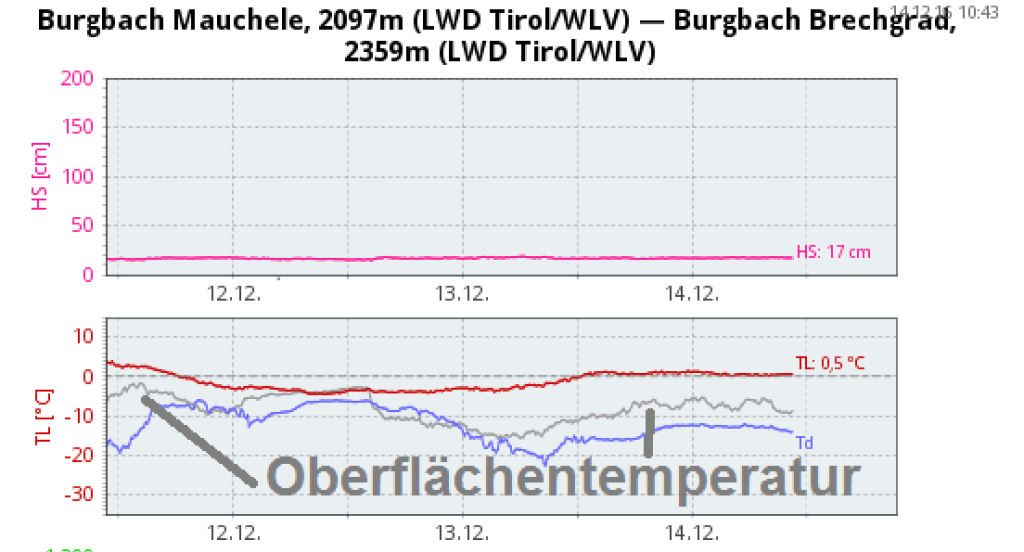Classic spring situation: Daily melt-freeze cycles
We often read about this, and it is by far the most common snow situation in spring. In terms of snow cover, spring in the Alps begins as early as February in the lower regions in the Randalpine area. In the high Alps, a high winter situation can always prevail until May - provided the weather conditions are right - and the first soaking of the snow cover only takes place then! We only talk about spring in combination with the snow cover when it becomes deeply soaked for the first time.
In the classic spring situation, the snow surface softens ("firns up") during the day and freezes back together at night to form a snow cover. This can be thick and stable, but it can also be thin and crumbly - depending on the exact temperature, humidity and cloud cover. However, the thickness of the snow cover also depends on the depth of moisture in the snow cover. If the snow cover is only a few centimetres moist on the surface and still dry underneath, then only the uppermost centimetres can freeze to form a hardpack.
It doesn't matter whether the snow cover is already completely soaked/soaked or whether the uppermost layers have only become moist - both are referred to as the "classic spring situation" as long as there is a daily change between the formation of hardpack on the surface and thawing during the day. Because this cycle is what this snow cover scenario is all about.
